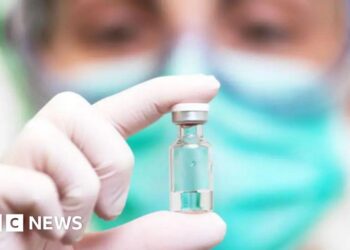SEATTLE — Molecular testing has been widely integrated into mainstream healthcare, and its use is increasing in dermatology. It can help differentiate between skin conditions, for example, as some appear similar clinically — and can also identify specific genetic mutations and other characteristics that can help select optimal treatments.
At the Society for Pediatric Dermatology (SPD) 2025 Annual Meeting, Virginia Sybert, MD, clinical professor of medical genetics at the University of Washington, Seattle, discussed what dermatologists need to know when using molecular testing in clinical practice in general, not specifically in pediatrics.
Who and When to Test
Knowing who and when to test is the first consideration, she said. “Is the test needed for a diagnosis, needed for treatment, needed for prognosis, or is it needed for reproductive counselling or management that can predict a patient’s response to certain therapies?”
For example, Sybert said, for an older adult patient with six café au lait spots, bilateral axillary freckling, a plexiform neurofibroma, and 27 neurofibromas, is molecular testing needed to diagnose neurofibromatosis? “No, it’s a clinical diagnosis, and molecular information is not going to change prognosis or change management, so you don’t always need to do a molecular test,” she noted.
Sybert also pointed out that the cost of molecular testing has dramatically decreased in the last decade, and it now costs less to do a whole genome panel than an MRI, which “is something to keep in mind when it comes to testing.”
Which Test to Use
The second consideration is which test to use, as there are now several types to choose from, and clinicians must decide which one is most appropriate for the need at hand, Sybert continued. Current options include a single gene test, a panel with multiple genes, whole exome testing, whole genome testing, microarray, karyotype, and RNA sequencing.
“Going back to our patient with neurofibromatosis, if you wanted to do a molecular test, you might just do a single gene,” she said. “But doing a single gene test requires that you know what the patient has and affirms that you are going in the right direction.”
But for a patient with suspected ichthyosis, testing for a single gene would be inadequate, as it is a genetically and clinically heterogeneous group of disorders. Therefore, a panel composed of known genetic mutations associated with ichthyosis would be needed.
Another decision is where to test, as laboratories may offer different options. For an ichthyosis panel, Sybert compared two panels from two labs. Both test for about 50 different genes, and while there is a lot of overlap, there are also genes that each one offers that the other does not. “So, you would need to know which panel you want to use and which genes you want to test for,” she explained. “And you also need to know how the testing is done. Are you looking for targeted gene testing, sequencing, or deletions or duplications? Are you looking for mosaicism?”
Another factor that must be considered is insurance coverage, because testing is often not covered. “We probably spend more time trying to get insurance to cover [testing] than we do seeing the patient,” Sybert emphasized. “You have to write a letter explaining how it may change management, and that can be time-consuming and frustrating.”
Interpretation of Results
“Third, is that you know how to interpret those results,” Sybert said, “and then we have to figure out what to do with them.”
Interpreting results entails looking for point mutations in targeted genes; rearrangement of a chromosome or gene so there is loss or gain of material; partial or whole deletion or duplication of a gene/chromosome; and expansion/repeat diseases.
The presentation of results can be daunting. Compared with the straightforward results of a simple blood test like a complete blood count, genetic testing results can be several pages long. The lab will provide a summary and highlight genetic variants identified in the test.
Then what? There are three basic types of genetic variants. The first is those considered benign or likely benign, which are considered harmless variants and not expected to affect a person’s health, and are not included in the lab report. The next group are pathogenic or likely pathogenic, which are expected to change how a gene functions and may cause a genetic disease or health risk. The third, and most ambiguous, are the “variants of uncertain significance (VUS).” There is not enough information about these variants to know if they are harmless or diagnostic of a genetic condition.
“Variants of unknown significance are going to be where most of your results will be,” she said. “But the vast majority of variants do not cause disease. The more testing you do, the more variants of unknown significance you will find.”
When trying to interpret them, clinicians can see if they have been reported in databases of normal populations and what the population is or if they have been reported in the literature.
“You can see if it has been predicted to be benign or pathogenic, or if they correlate with family history,” Sybert said. “You may find that everyone in the family has this variant.”
But over time, variants can either be upgraded or downgraded, as demonstrated by a 2018 study on the prevalence of variant reclassification after genetic testing for hereditary cancer, published in JAMA. Of 1.67 million hereditary cancer tests, 7.7% of the unique variants of uncertain significance were reclassified. Of those, 91.2% were eventually downgraded to “benign” or “likely benign,” while 8.7% were upgraded to “pathogenic” or “likely pathogenic.”
The possibility that at some point, interpretation of a VUS result may change should be discussed with the patient and family. “We must emphasize that it is incumbent on them to touch base with us every few years,” Sybert said.
Sybert emphasized that dermatologists “are not alone” in regard to making decisions about genetic testing and interpreting results, which can be daunting. She encouraged dermatologists to reach out to genetic clinics at their institution, genetic counselors, and geneticists.
Sybert reported having no relevant financial relationships.
Source link : https://www.medscape.com/viewarticle/molecular-testing-dermatology-who-and-when-test-2025a1000knx?src=rss
Author :
Publish date : 2025-08-04 12:09:00
Copyright for syndicated content belongs to the linked Source.













